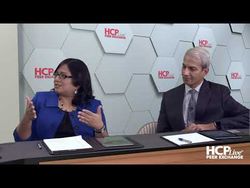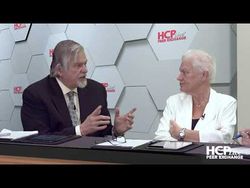Management of Beta Thalassemia - Episode 11
Future Impact of the Novel Therapy for Beta-Thalassemia
Peter L. Salgo, MD: Does it have the potential, in your view—all of you—to replace bone marrow transplantation with simply this drug?
Sujit Sheth, MD: It’s not a curative therapy. Bone marrow transplantation has a curative intent.
Peter L. Salgo, MD: But let me be a devil’s advocate here. We have lots of diseases that we treat very effectively that aren’t cured, like heart failure. We can’t cure diabetes. It doesn’t mean it’s no good.
Sujit Sheth, MD: No. I don’t think every patient is going to go through bone marrow transplant. I don’t think every patient is even going to be eligible to go through gene therapy. You have to be in good shape to undergo an autologous bone marrow transplant to get gene therapy. Not everybody is going to be able to do that or is going to want to do that. So this will be a very good alternative to reduce the transfusion requirement and reduce the iron overload that results from that increased transfusion. You have decreased red blood cell units going in, you have decreased iron going in, decreased iron overload, reducing your chances of iron-related complications. It’s definitely a good drug that you would use at this point in any adults. I would offer it to any adult who has a regular transfusion requirement.
Peter L. Salgo, MD: Just to sort of lay it out: it’s not curative. A curative therapy would say you’re off transfusions, your bone marrow is fine, you’re all good.
Maria Domenica-Cappellini, MD: The percentage of patients is becoming transfusion dependent.
Peter L. Salgo, MD: Right. But I mean, if we’re going to talk about bone marrow transplantation, the word cure is a powerful word. We’re done. This disease is gone. Short of that.
Maria Domenica-Cappellini, MD: Nothing is 100% cured in the patients.
Peter L. Salgo, MD: Right, nothing is 100% except taxes. Aside from that, we suspect, based on the results so far, a drug that is well tolerated, which decreases transfusion requirement and may in some people get rid of transfusion requirement and extend not only their life but their quality of life. Did I get that right?
Farzana Sayani, MD: Yeah.
Peter L. Salgo, MD: I’m hitting something right anyway.
Maria Domenica-Cappellini, MD: But to a point for bone marrow transplantation. We know by the old data produced that adults are the transplanted patients who have some complications such as liver fibrosis—the outcome of bone marrow transplantation is not as good as in children. If you’re asking me what I do if I have a patient who is 40 years old asking me for bone marrow transplantation, I say, “Listen, we can discuss this, but it’s not the best choice for you.” Whereas, with the pharmacologic approaches, luspatercept, I should say, can be offered to anyone.
Peter L. Salgo, MD: And it’s effective in adults. Is it effective in children? We don’t know?
Maria Domenica-Cappellini, MD: We don’t know yet.
Peter L. Salgo, MD: We don’t know. Is there a trial ongoing?
Thomas D. Coates, MD: Yes.
Maria Domenica-Cappellini, MD: Yes, I think it’s starting.
Peter L. Salgo, MD: It’s going to start very soon.
Maria Domenica-Cappellini, MD: Yes. This is groundbreaking stuff, really.
Farzana Sayani, MD: What’s also important is it will be really exciting to see this being used in more patients, to see in the adults who have other complications. Are we seeing improvement? Are we seeing fewer transfusions? Are we seeing fewer iron overload-related complications that affect the morbidity? What about pulmonary hypertension? That’s going to be really exciting to see by raising the hemoglobin, by affecting the erythropoiesis. We are seeing this down the road.
Sujit Sheth, MD: And the osteoporosis as well.
Peter L. Salgo, MD: Did the study go on long enough to get a handle on the iron overload issues with this disease?
Sujit Sheth, MD: Probably not. They looked at iron by the serum ferritin level and they looked at iron by MRI [magnetic resonance imaging]. On the serum ferritin level, which is a reasonable marker but not the most reliable marker of total-body iron overload, there was a statistically significant reduction in the serum ferritin levels of patients who got the luspatercept versus placebo. They didn’t have any statistical significance on the other 2, probably because it does take longer to see those effects. But as they go, the drug is now in an open-label extension phase, and they’re collecting data on those patients. We’ll see more data on the iron parameters, on the bone density, on all those other complications. We’ll see data down the road.
Peter L. Salgo, MD: That was the import of my question. Those things that come on slowly go away soon.
Maria Domenica-Cappellini, MD: Yes.
Peter L. Salgo, MD: So the iron may be a late benefit.
Thomas D. Coates, MD: It was hard to really evaluate the iron in the course of this study. But obviously, if you decrease the number of transfusions.
Maria Domenica-Cappellini, MD: You decrease the iron intake.
Thomas D. Coates, MD: Yeah.
Maria Domenica-Cappellini, MD: But it’s probably even more than that. It’s not only in iron intake, a reduction, but probably—as we mentioned before—dysregulation of iron. Probably some accumulated iron will be used to produce hemoglobin. So this will be removed.
Peter L. Salgo, MD: You’ll suck it up all on your own.
Maria Domenica-Cappellini, MD: Yeah, exactly.
Peter L. Salgo, MD: That’s really interesting.
Thomas D. Coates, MD: I mean, normal people recycle 25 mg of iron a day, and they absorb only 2 mg. So the largest source of iron in normal people is the recycling of old red blood cells. If you turn on the ability to make red cells, which is what this drug does, then maybe you’ll utilize more of the iron.
Transcript edited for clarity.



